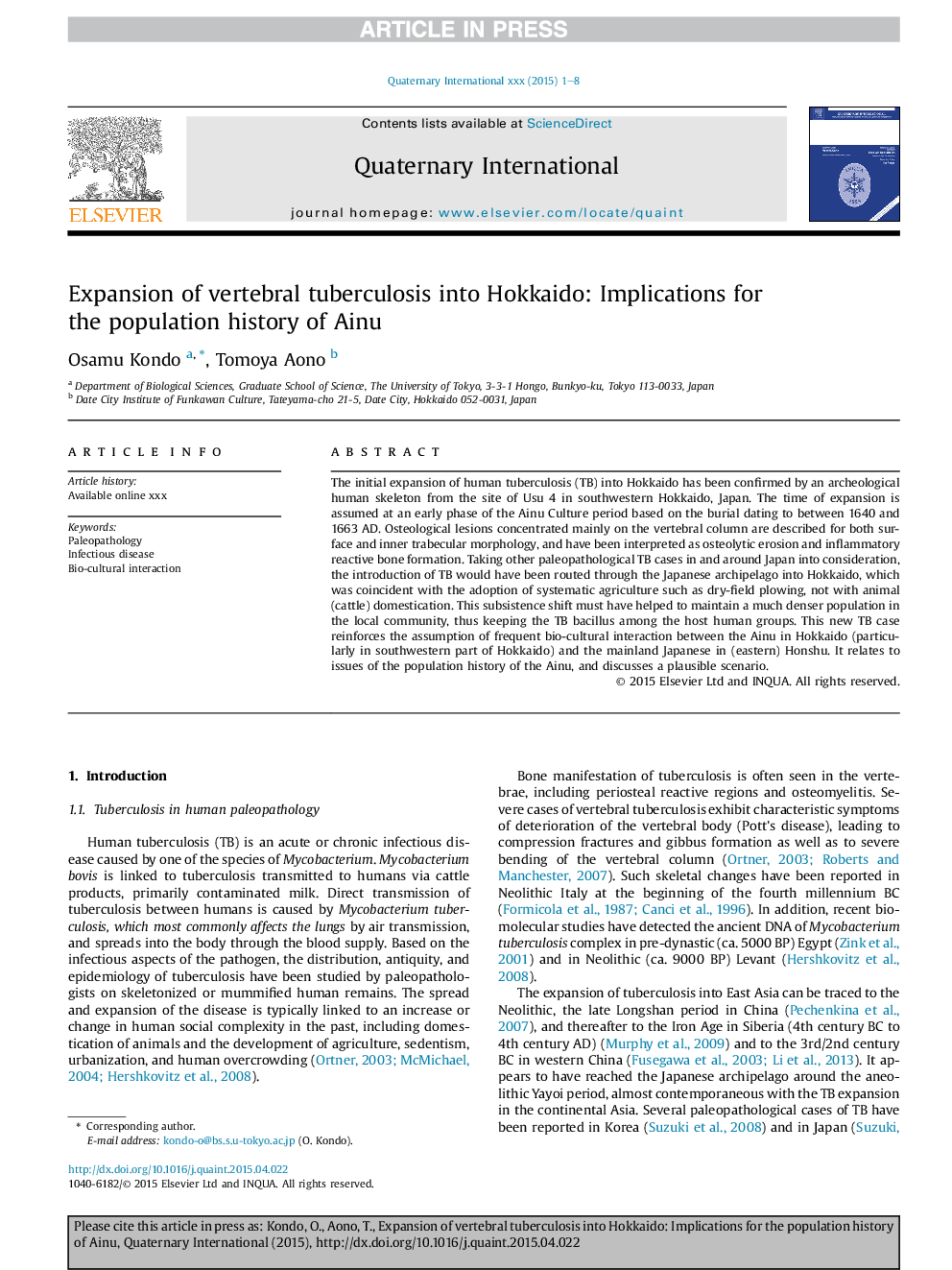| کد مقاله | کد نشریه | سال انتشار | مقاله انگلیسی | نسخه تمام متن |
|---|---|---|---|---|
| 10500882 | 944454 | 2016 | 8 صفحه PDF | دانلود رایگان |
عنوان انگلیسی مقاله ISI
Expansion of vertebral tuberculosis into Hokkaido: Implications for the population history of Ainu
ترجمه فارسی عنوان
گسترش سلول های مهره ای به هوکایدو: پیامدهای تاریخ سابقه آینو
دانلود مقاله + سفارش ترجمه
دانلود مقاله ISI انگلیسی
رایگان برای ایرانیان
کلمات کلیدی
پالئوپاتولوژی، بیماری عفونی، تعامل بیولوژیکی،
موضوعات مرتبط
مهندسی و علوم پایه
علوم زمین و سیارات
زمین شناسی
چکیده انگلیسی
The initial expansion of human tuberculosis (TB) into Hokkaido has been confirmed by an archeological human skeleton from the site of Usu 4 in southwestern Hokkaido, Japan. The time of expansion is assumed at an early phase of the Ainu Culture period based on the burial dating to between 1640 and 1663Â AD. Osteological lesions concentrated mainly on the vertebral column are described for both surface and inner trabecular morphology, and have been interpreted as osteolytic erosion and inflammatory reactive bone formation. Taking other paleopathological TB cases in and around Japan into consideration, the introduction of TB would have been routed through the Japanese archipelago into Hokkaido, which was coincident with the adoption of systematic agriculture such as dry-field plowing, not with animal (cattle) domestication. This subsistence shift must have helped to maintain a much denser population in the local community, thus keeping the TB bacillus among the host human groups. This new TB case reinforces the assumption of frequent bio-cultural interaction between the Ainu in Hokkaido (particularly in southwestern part of Hokkaido) and the mainland Japanese in (eastern) Honshu. It relates to issues of the population history of the Ainu, and discusses a plausible scenario.
ناشر
Database: Elsevier - ScienceDirect (ساینس دایرکت)
Journal: Quaternary International - Volume 405, Part B, 16 June 2016, Pages 58-65
Journal: Quaternary International - Volume 405, Part B, 16 June 2016, Pages 58-65
نویسندگان
Osamu Kondo, Tomoya Aono,
